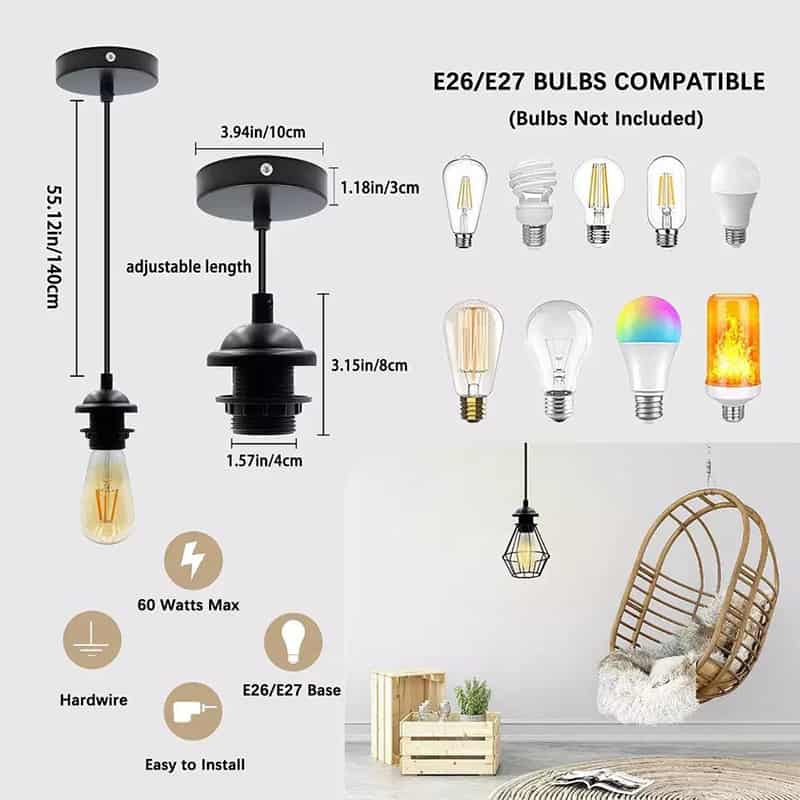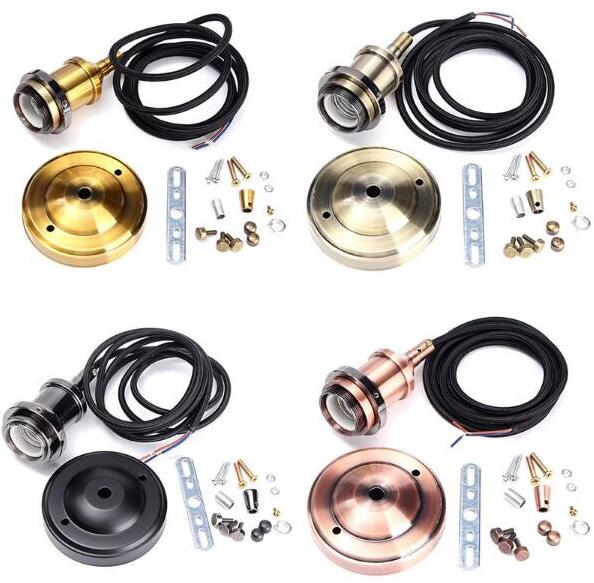Vintage lighting fixtures have a timeless appeal and are often the focal point of a room’s decor. One interesting feature of these fixtures is the unique sockets they use. Knowing the name and type of a vintage socket is important if you’re going to restore these old things to make sure they work right and look right.
Vintage sockets come in a variety of types, each with distinct features and naming conventions based on their size, design, and regional origin. Understanding these differences is key to selecting the right bulbs and replacements for your fixture.
Exploring the world of vintage sockets reveals the rich history of lighting technology while helping you preserve the character of antique lamps.

Overview of Vintage Socket Types
A lamp socket is the essential component of a lighting fixture, responsible for holding the bulb and connecting it to the electrical circuit. Vintage sockets often stand out due to their materials, like ceramic or bakelite, and their unique design features. These sockets were crafted to meet the standards of their time, which can vary significantly from modern counterparts.
Vintage sockets are commonly associated with period lighting, ranging from ornate chandeliers to industrial fixtures. Their names and specifications often reflect the technology and trends of their era.
Popular Types of Vintage Sockets
Edison Screw Sockets
The Edison Screw socket is one of the most common types found in vintage fixtures. Variants like E26, E27, and E40 refer to the diameter of the screw base in millimeters. E26 and E27 are nearly identical but differ slightly in voltage compatibility, with E26 being more common in North America and E27 in Europe. E40, also known as the Mogul base, is used in larger industrial lamps.
Bayonet Cap Sockets
Bayonet sockets, identified by the B15 and B22 designations, are widely used in older British and European fixtures. They feature a push-and-twist mechanism that ensures a secure bulb connection. These sockets are often seen in decorative lighting and are favored for their reliability.
Push-in and Plug-in Sockets
Sockets like GU10 and MR16 are push-in types designed for halogen and LED bulbs. The “GU” series indicates a bayonet-style connection with two pins, while MR16 refers to a multifaceted reflector socket commonly used in track lighting.
Candelabra and Specialty Sockets
Candelabra sockets, such as E12 and E14, are smaller Edison Screw types often found in chandeliers and other decorative fixtures. Their compact size and elegant appearance make them ideal for ornate designs.

Identifying a Vintage Socket
To identify a vintage socket, examine its physical characteristics, including dimensions, threading, and base type. Many sockets have markings or stamps that provide clues about their manufacturer and specifications. For example, an E26 socket might include a diameter measurement and voltage rating.
Comparing these features to modern standards can also help determine bulb compatibility. For instance, E26 and E27 sockets can often interchangeably accommodate bulbs as long as the voltage is appropriate.
Key Considerations When Identifying Sockets
Voltage and wattage ratings are critical when identifying vintage sockets. These specifications ensure that the socket can handle the required electrical load safely. Additionally, regional variations must be considered, as North American and European standards often differ. For example, E26 is standard in the U.S., while E27 is more common in Europe.
Matching Vintage Sockets with Bulbs
Compatibility between vintage sockets and bulbs is determined by the socket’s size, type, and electrical rating. Vintage fixtures often use incandescent bulbs, but modern LEDs designed for these sockets are now available. For example, an E12 candelabra socket can accommodate both traditional incandescent bulbs and energy-efficient LED equivalents.
When selecting bulbs, always consider the socket’s voltage and wattage limits to prevent overheating or damage.
Restoring or Replacing Vintage Sockets
Restoring a vintage socket begins with evaluating its condition. If the socket is in good shape, cleaning and tightening the connections may suffice. However, if there is visible damage, such as corrosion or cracks, replacement is the safest option.
Modern replicas of vintage sockets allow you to maintain the lamp’s original charm while ensuring compliance with contemporary safety standards. Options range from ceramic sockets for high-temperature applications to bakelite designs for a true vintage look.

Frequently Asked Questions
How do I measure a vintage socket? Use calipers or a ruler to measure the diameter of the socket’s base and the threading type. This information helps identify the socket model and find compatible bulbs.
Can vintage sockets be used with modern LEDs? Yes, many modern LED bulbs are designed to fit vintage sockets. However, check the voltage compatibility and ensure the socket can handle the LED’s wattage requirements.
Final Words:
Identifying a vintage socket is an essential step in restoring antique lighting fixtures. By understanding their types and characteristics, you can preserve the historical significance of the fixture while ensuring it functions safely and effectively. With the right approach, your vintage lamp can continue to light up spaces with timeless elegance.













